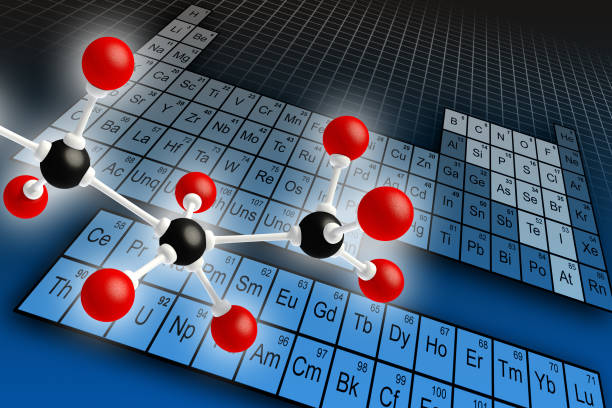1. Introduction to Oxygen’s Atomic Structure
Oxygen is one of the most essential elements for life on Earth. In terms of atomic structure, it has 8 protons in its nucleus, which also means it has 8 electrons in its neutral state. Electrons are the negatively charged particles that orbit the nucleus and define much of an element’s chemical behavior.
These electrons are arranged in energy levels or shells around the nucleus. For oxygen, two electrons occupy the first energy level, and the remaining six occupy the second level. This arrangement plays a significant role in how oxygen forms bonds with other atoms in chemical reactions.
2. The Number of Electrons in a Neutral Oxygen Atom
A neutral oxygen atom has 8 electrons. This number is equal to its atomic number, which can be found on the periodic table. The atomic number represents the number of protons in an atom, and in a neutral atom, the number of electrons must match the number of protons to balance the charge.
These 8 electrons allow oxygen to participate in bonding with other elements, particularly through covalent bonds. Oxygen’s high electronegativity and electron configuration make it highly reactive, especially with hydrogen and carbon, forming compounds like water (H₂O) and carbon dioxide (CO₂).
3. Electron Configuration of Oxygen Explained
The electron configuration of oxygen is written as 1s² 2s² 2p⁴. This notation shows how the 8 electrons are distributed among the various energy levels and sublevels. The first two electrons fill the 1s orbital, the next two fill the 2s, and the remaining four occupy the 2p orbital.
This configuration reveals that oxygen has six electrons in its outer shell, or valence shell. These valence electrons are crucial in determining how oxygen interacts with other elements. Oxygen typically forms two bonds to complete its octet, a rule that guides many chemical reactions.
4. How Ions Affect Oxygen’s Electron Count
When oxygen becomes an ion, the number of electrons changes. For example, a common oxygen ion is the oxide ion (O²⁻), which has gained two extra electrons. This gives it a total of 10 electrons, resulting in a negative charge.
This negatively charged ion is more stable in many reactions and is commonly found in compounds such as metal oxides and water. Understanding how ions work helps in grasping the chemical behavior of oxygen in both biological and industrial contexts.
5. Valence Electrons: Why Oxygen Has Six
Oxygen has six valence electrons, which are the electrons in the outermost shell. These are the most chemically active electrons and are responsible for bonding and reactivity. Oxygen tends to form bonds to gain two additional electrons and achieve a full octet.
This explains why oxygen often forms two covalent bonds in compounds, like in water (H₂O), where each hydrogen atom shares an electron with oxygen. The concept of valence electrons is key to predicting how elements interact in molecules and compounds.
6. How Electrons Influence Oxygen’s Chemical Behavior
The arrangement of electrons, especially the six valence electrons, makes oxygen highly electronegative—meaning it has a strong tendency to attract electrons from other atoms. This is a fundamental reason why oxygen plays a central role in oxidation and reduction reactions.
In biological systems, this high reactivity allows oxygen to participate in processes like cellular respiration, where it helps in the production of energy. In environmental chemistry, oxygen’s electron affinity drives the breakdown of pollutants and the formation of compounds in the atmosphere.
7. Comparing Oxygen’s Electrons to Other Elements
Compared to elements like hydrogen (1 electron) or carbon (6 electrons), oxygen’s 8 electrons give it more complex chemical behavior. While hydrogen is limited in bonding and carbon is versatile, oxygen combines high reactivity with the ability to form stable bonds.
Elements in the same group as oxygen, like sulfur and selenium, also have six valence electrons. This similarity results in comparable chemical properties across the group. However, oxygen’s smaller size and higher electronegativity make it more reactive than its group counterparts.
8. Role of Electrons in Oxygen-Based Compounds
In compounds, oxygen often shares or accepts electrons to complete its outer shell. For example, in water, oxygen shares one electron each with two hydrogen atoms. In carbon dioxide (CO₂), oxygen forms double bonds with carbon, sharing two electrons per bond.
The presence and behavior of oxygen’s electrons influence the structure, polarity, and reactivity of the compounds it forms. That’s why understanding electron configuration is so important when studying chemical reactions and molecular biology.
9. Visualizing Oxygen’s Electrons With Bohr and Lewis Models
The Bohr model of oxygen shows two electrons in the inner shell and six in the outer shell. This helps students and learners visualize electron placement and understand why oxygen needs two more electrons to reach a stable configuration.
The Lewis dot structure simplifies this even further, showing the six valence electrons as dots around the element symbol “O.” These diagrams are useful for predicting bonding patterns and understanding how oxygen interacts with other atoms in a molecule.
10. Summary: What to Remember About Oxygen’s Electrons
To summarize, a neutral oxygen atom has 8 electrons, arranged as 2 in the first shell and 6 in the second. These electrons, particularly the six valence ones, determine how oxygen bonds and reacts with other elements. In ion form, like O²⁻, oxygen has 10 electrons.
Understanding oxygen’s electrons helps explain everything from basic chemical reactions to complex biological processes. Whether you’re studying chemistry or just curious about the elements, knowing how many electrons oxygen has—and how they’re used—is essential knowledge.


